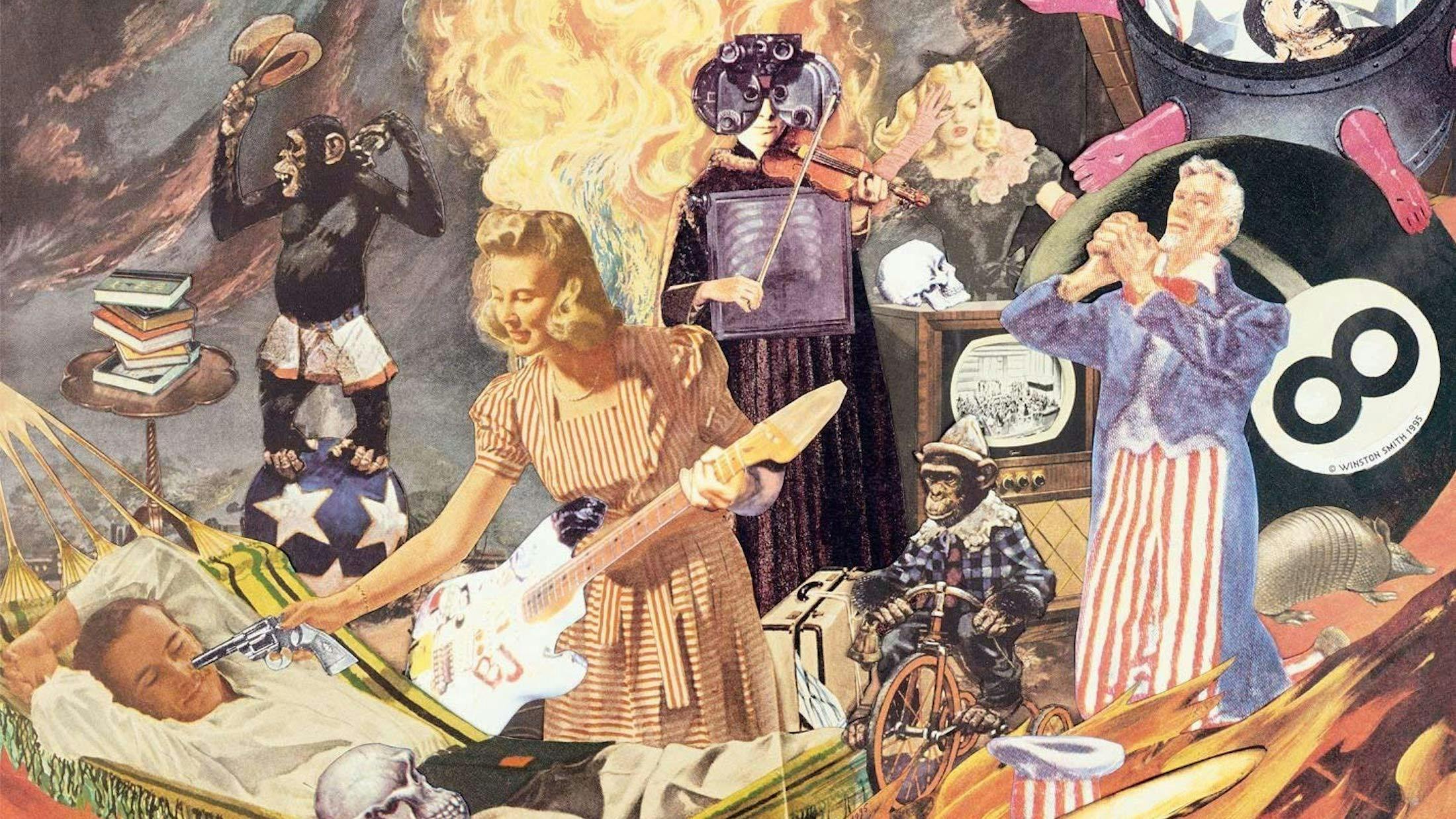When Green Day entered Hyde Street Studios in San Francisco to begin work on the successor to Dookie, they were a band in a state of discombobulation. The tour in support of their all-conquering
third album had begun at the Cattle Club in Sacramento and ended 10 months later with a performance at a charity concert at New York’s Madison Square Garden. At that show Billie Joe played the encore naked, atop a bill that also included Jon Bon Jovi. Clearly, things had changed for the band. In fact, the only thing that had not changed was Green Day themselves. The trio’s response to these alien and altered circumstances was to circle their wagons, and to turn inward.
The result, Insomniac, is the album on which its creators lost their baby teeth. A master class in buzzsaw efficiency, the songs are so economical, not to mention harsh, that the removal of even a single chord would cause each composition to collapse in on itself. ‘You better swallow your pride, or you’re gonna choke on it’, goes the chorus to the relentless No Pride; the narrator of Brain Stew is ‘fucked up and spun out’ in his room, and every character on Stuart And The Ave. is ‘all fucked up’. The songs are given extra heft by a thicker guitar sound designed by Bob Bradshaw at Custom Audio Electronics. The effort Tré Cool invested in recording the opening instrumental section to the propulsive and peerless Panic Song saw the drummer tear the calluses on his hand and to slump, spent, against a wall between takes.
“I really admired him for putting himself through that,” says Rob Cavallo, Insomniac’s producer, remembering the musician’s hands as being “a bloody mess”.
“I felt at the time that there was a real urgency to what we were doing,” remembers Mike Dirnt. “There was a real urgency to stake our claim and say, ‘No, we belong here.’ It was really important to us to make sure people knew that we weren’t just a flash in the pan.”
